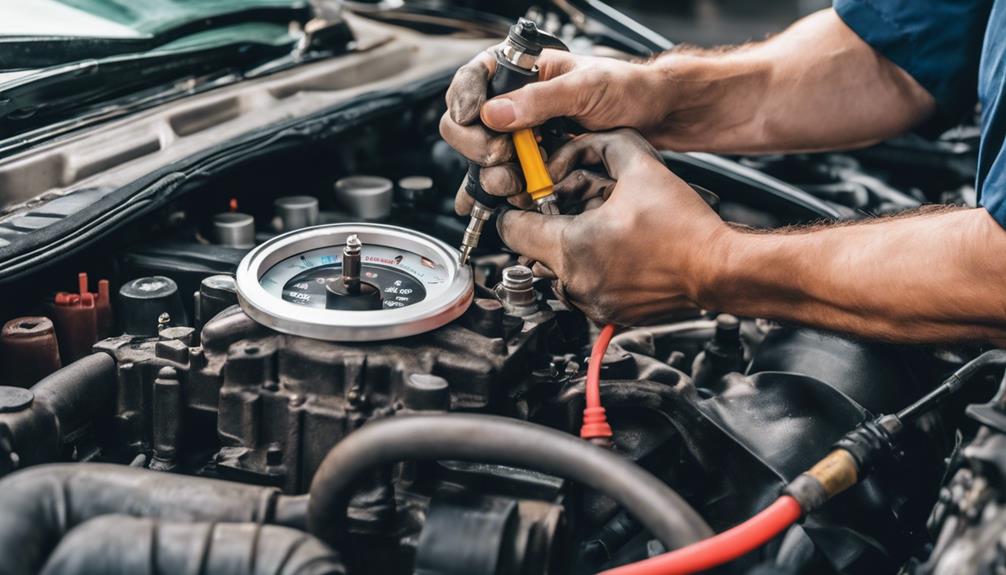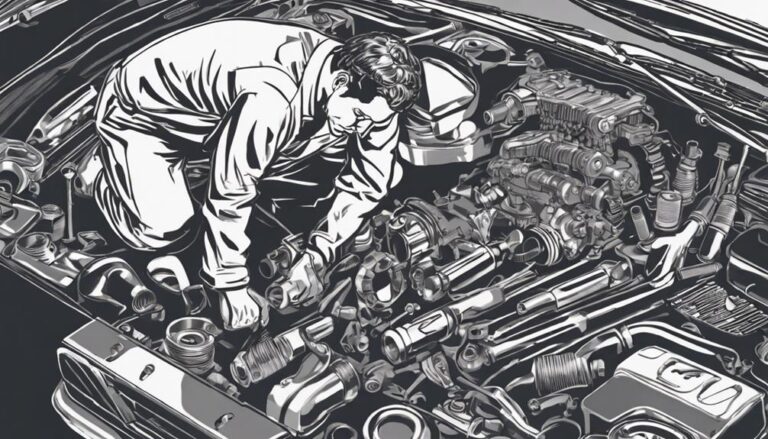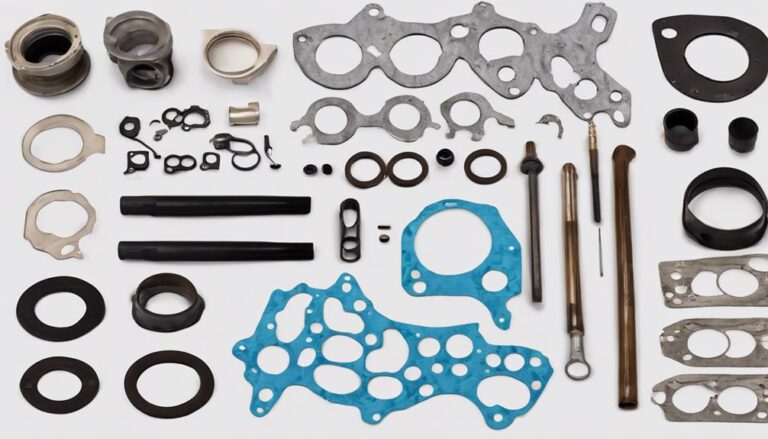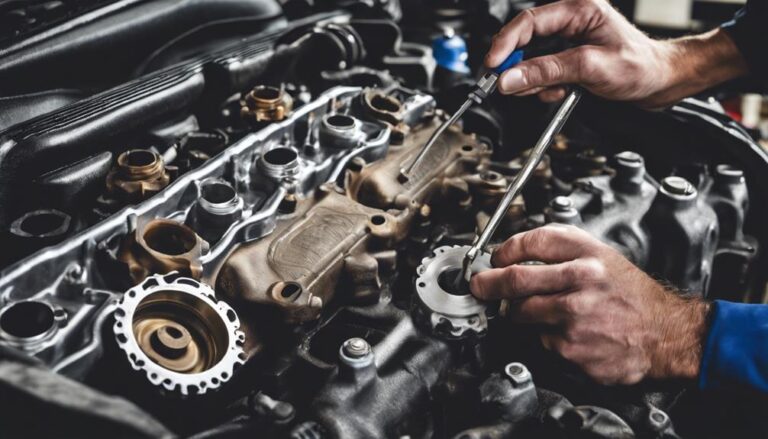Top Head Gasket Leak Detection Methods in Car Repair
Ever wondered if there's a foolproof method to pinpoint that elusive head gasket leak in your car?
Well, let's start with the coolant system pressure test, a common go-to for many mechanics, but is it always the most reliable?
As you navigate through the domain of head gasket leak detection, you'll soon find out that combining various methods might just be the key to uncovering the true source of the issue.
Key Takeaways
- Coolant system pressure tests and combustion gas leak tests are reliable for detecting head gasket leaks.
- Utilize oil analysis and visual inspections to identify contamination and leaks early on.
- Diagnostic scan tools help analyze electronic systems for sensor malfunctions related to head gasket issues.
- Regular preventive maintenance, including tests and inspections, can avoid extensive engine damage and costly repairs.
Coolant System Pressure Test
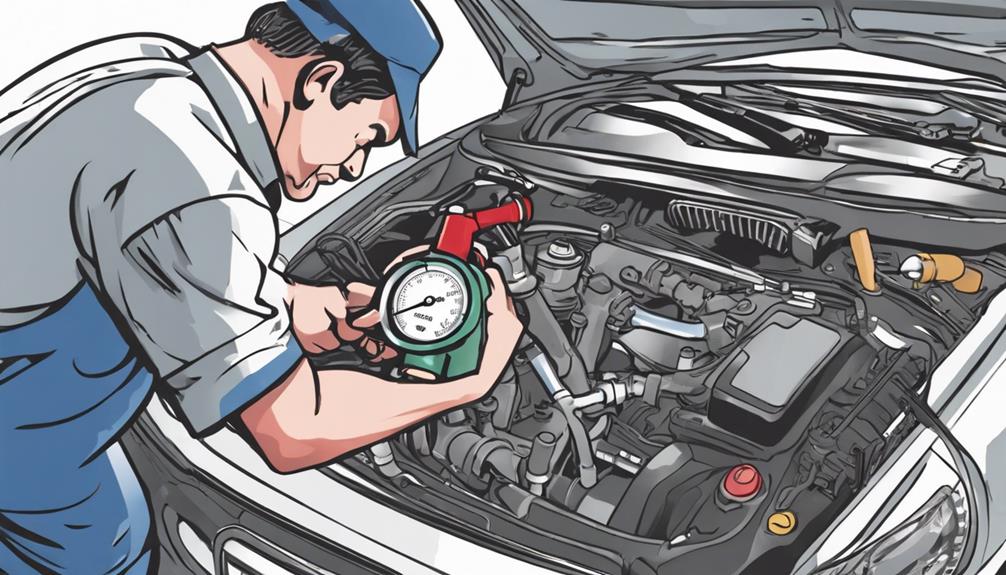
To detect a head gasket leak in a car, you can perform a coolant system pressure test. Pressure testing is a reliable method for leak detection in the cooling system.
Start by ensuring the engine is cool before removing the radiator cap. Attach a pressure testing kit to the radiator or expansion tank and pump air into the system. Monitor the pressure gauge to see if there's a drop, indicating a leak. Check all connections, hoses, the radiator, water pump, and heater core for signs of leakage.
If the pressure drops but no external leaks are visible, it could signify an internal leak through the head gasket. This test helps identify issues early, preventing overheating and engine damage. Remember to follow safety precautions when working with a pressurized system.
Pressure testing is a fundamental step in diagnosing head gasket leaks, providing a systematic approach for effective detection.
Combustion Gas Leak Test
Perform the combustion gas leak test using a gas detection kit specifically designed for automotive applications. This test helps identify leaks in the head gasket by detecting exhaust gases that may be present in the cooling system.
Follow these steps for an effective combustion gas leak test:
- Prepare the Vehicle: Guarantee the engine is cool before starting the test to prevent injuries and obtain accurate results.
- Locate the Test Port: Find the test port on the radiator or reservoir where the detection kit can be connected.
- Connect the Kit: Attach the detection kit to the test port and follow the manufacturer's instructions to introduce the testing fluid into the system.
- Interpret the Results: Observe the color change in the testing fluid; a change to yellow indicates the presence of combustion gases, suggesting a leak in the cylinder head gasket.
Oil Analysis
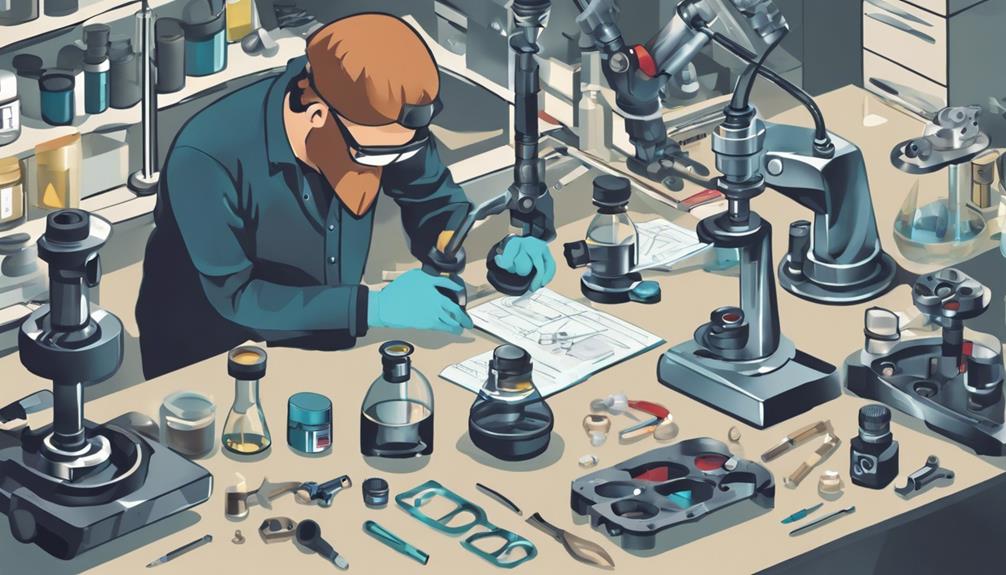
Conducting oil analysis provides valuable insights into the condition of the engine components and can help detect potential issues early on in car maintenance. Oil contamination, a common indicator of head gasket leaks, can be identified through this method. By analyzing the oil sample, technicians can detect the presence of coolant or combustion by-products in the oil, indicating a potential head gasket issue. Additionally, oil analysis can reveal wear particles present in the oil, offering clues about the overall health of the engine components.
Detecting oil contamination early on is vital in preventing further damage to the engine and avoiding costly repairs. By regularly analyzing the oil, you can monitor the levels of contaminants and wear particles, allowing you to address any issues promptly. This proactive approach to maintenance can prolong the life of your engine and guarantee optimum performance. Oil analysis serves as a valuable tool in the diagnostic process, providing essential information for maintaining the health of your vehicle's engine.
Visual Inspection
When inspecting for a head gasket leak in your car, visually examining certain key areas can reveal telltale signs of potential issues. Here are some essential steps to conduct a thorough visual inspection:
- Check for Coolant Leaks: Look for pink, green, or orange residue around the head gasket area, indicating a coolant leak.
- Inspect for Oil Leaks: Check for dark brown or black oily residue near the gasket, signaling an oil leak.
- Thermal Imaging: Use a thermal imaging camera to detect temperature variations along the gasket that may indicate a leak.
- Dye Testing: Perform a dye test by adding a UV-sensitive dye to the coolant or oil and using a UV light to spot leaks under the gasket.
Diagnostic Scan Tool Analysis
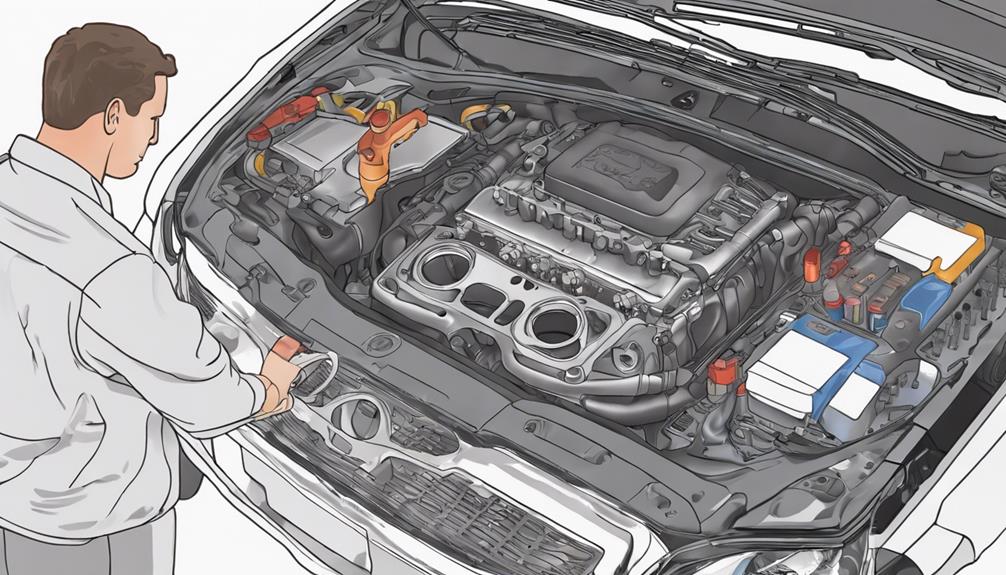
Utilize a diagnostic scan tool to analyze the engine's electronic control system for potential head gasket leaks. The scan tool connects to the vehicle's onboard computer to retrieve data and identify any sensor malfunctions that could indicate a head gasket issue. By conducting a thorough scan, the tool can pinpoint irregularities in the engine's performance that may be linked to a head gasket leak.
Once the diagnostic scan tool has gathered the necessary data, the key step lies in accurate data interpretation. Through this process, the tool deciphers the information collected from various sensors to determine if there are any discrepancies that suggest a head gasket leak. By meticulously analyzing the data output, the scan tool assists in diagnosing the problem with precision, enabling targeted repairs to be carried out efficiently.
Frequently Asked Questions
Can a Head Gasket Leak Be Caused by Other Issues Besides a Faulty Head Gasket?
Yes, a head gasket leak can result from other issues. Engine overheating and coolant contamination may cause symptoms similar to a faulty head gasket. It's essential to identify the root cause accurately for effective repair.
How Often Should a Coolant System Pressure Test Be Performed on a Car?
You should regularly schedule a coolant system pressure test during car inspections for leak prevention. This maintenance task guarantees the system's integrity, helps identify issues early, and safeguards against potential damages. Stay proactive to maintain your vehicle's health.
Are There Any Specific Signs or Symptoms of a Head Gasket Leak That Drivers Should Be Aware Of?
If you suspect a head gasket leak, watch for coolant loss, engine overheating, white smoke, and perform a visual inspection. These signs indicate potential issues that need immediate attention to prevent further damage.
Is It Possible for a Head Gasket Leak to Go Undetected by All of the Mentioned Detection Methods?
You might be surprised to know that up to 13% of head gasket leaks can remain hidden despite common detection methods. These silent leaks can lead to severe engine damage if left untreated, emphasizing the importance of thorough inspection.
Are There Any Preventative Measures That Can Be Taken to Reduce the Risk of a Head Gasket Leak in a Car?
To reduce the risk of a head gasket leak in your car, prioritize preventative maintenance. Regularly inspect your engine for signs of wear and overheating. Maintain a strict cooling system maintenance schedule and follow an inspection checklist for early detection and prevention.
Conclusion
To summarize, detecting head gasket leaks in cars is vital for maintaining engine performance. Did you know that according to a study by the Automotive Maintenance and Repair Association, head gasket issues are responsible for 7% of all vehicle breakdowns?
By utilizing methods such as coolant system pressure tests, combustion gas leak tests, oil analysis, visual inspections, and diagnostic scan tool analysis, mechanics can efficiently identify and repair head gasket leaks.

